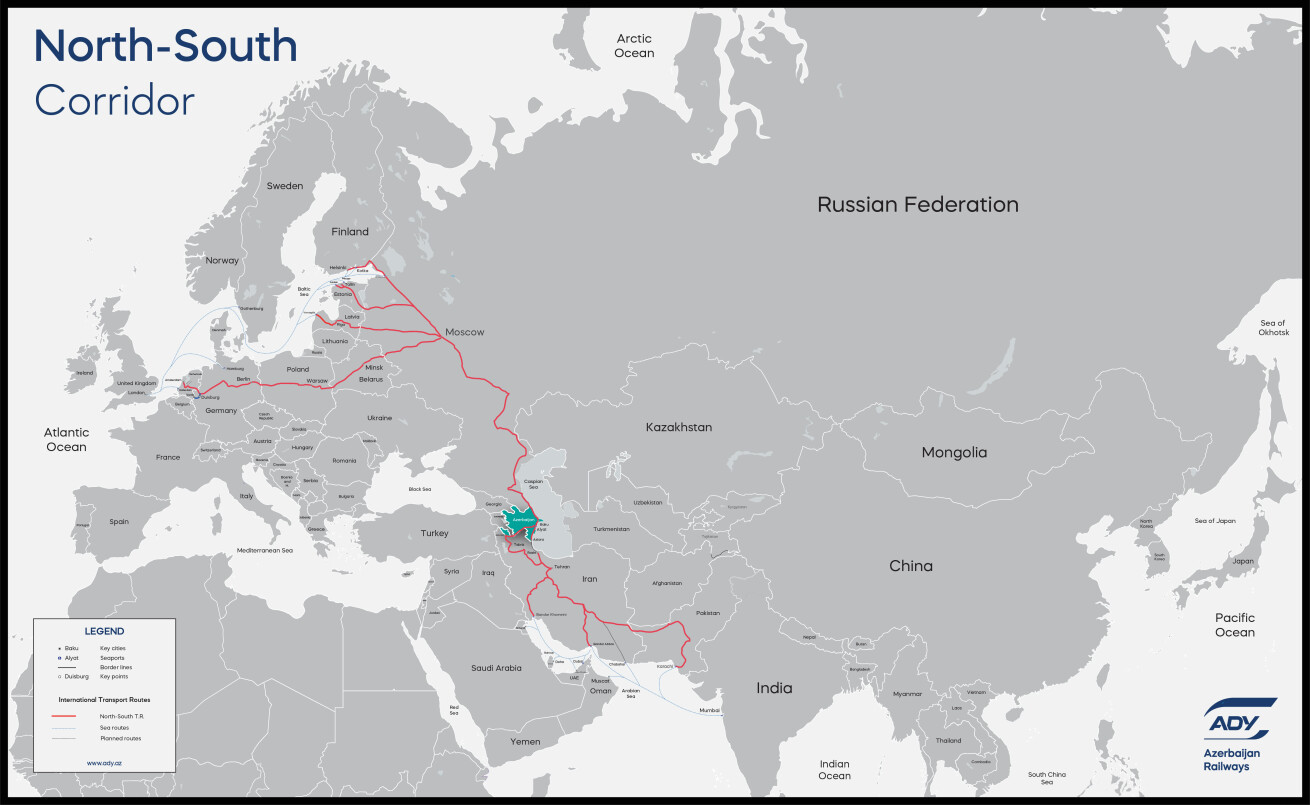North-South Transport Corridor

North-South Transport Corridor
Transport Corridor primarily facilitates the delivery of goods from India and the Persian Gulf region to Russia, Western Europe, the Baltic, and Scandinavian countries. The main advantage of the North-South corridor compared to other routes is the significantly shorter transit distance and time. While transportation from the Persian Gulf and Indian Ocean to Helsinki via the Suez Canal, the Mediterranean Sea, and the Baltic Sea takes 45-60 days, the North-South corridor reduces this time to 20-25 days.
Work is underway to link the railways of Azerbaijan and Iran within the North-South International Transport Corridor. A railway has already been constructed from Azerbaijan's Astara station to Astara, Iran. The next phase involves the construction of the missing 167 km of the Astara-Rasht railway to fully integrate the railways of Iran and Azerbaijan. Once complete, the railways of Scandinavia, Russia, Azerbaijan, and Iran will be united in a single network, forming a continuous rail route from the north to the Persian Gulf.
The agreement on the establishment of the North-South International Transport Corridor was signed on September 12, 2000, by the governments of Russia, Iran, and India. The Republic of Azerbaijan joined this agreement through a law dated September 20, 2005.
-
Europe
Freight is transported to Europe via Russia, strengthening trade between Asia and Europe.
-
Russia
Freight continues to be transported to Europe and other directions through Russia.
-
Azerbaijan
Freight is delivered to the Russian border by Azerbaijan’s railway.
-
Iran
Freight is delivered by rail to northern Iran and the Azerbaijan border.
-
Persian Gulf
Freight is transported by ship to Iran's ports in the Persian Gulf.
-
India
The corridor starts at the main ports of India.
